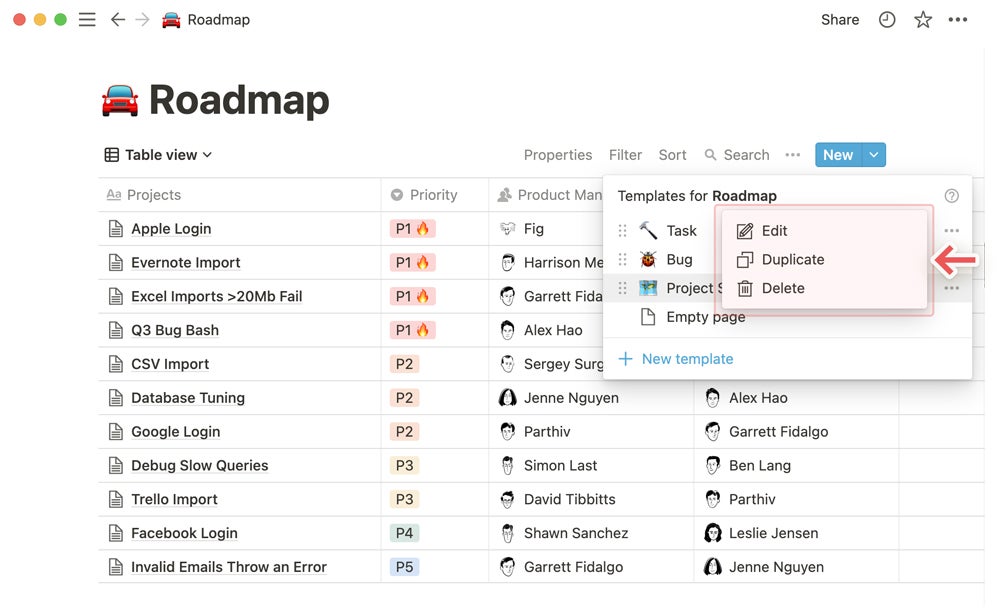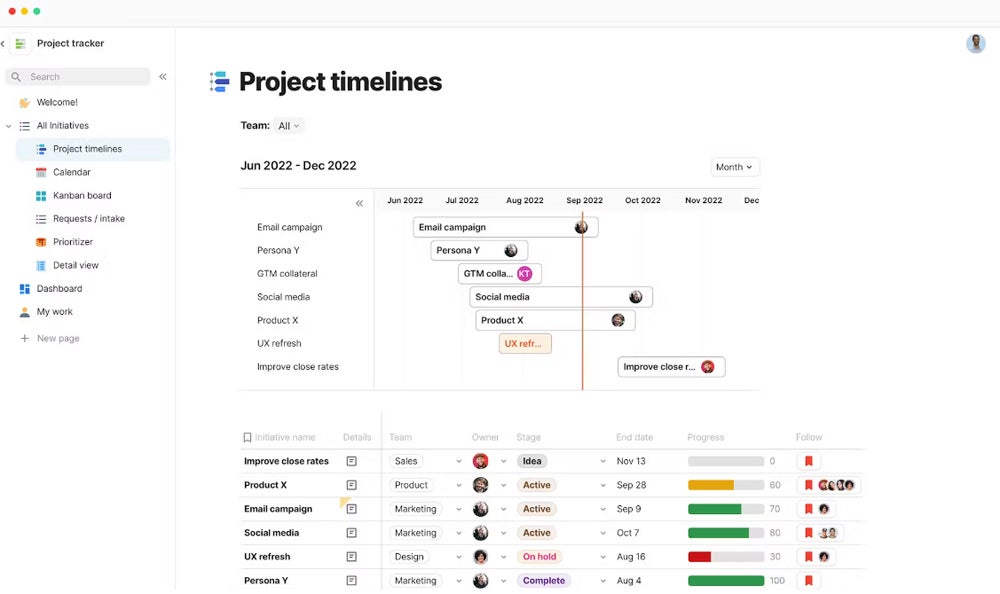In project management, efficiency, collaboration and organization are paramount — choosing the right tool can make all the difference. Both Coda and Notion have gained significant traction among professionals across various industries. We evaluated each tool’s strengths, weaknesses and unique selling points to provide a comprehensive analysis to help individuals and teams select the best product for their use cases.
Coda is a great choice if you’re looking for a tool that combines the functionality of documents, spreadsheets and databases in one platform. It allows for creating interactive documents and managing databases, making it a versatile choice for complex projects and workflows.
Notion is best for teams looking for a knowledge management tool for organizing and storing information. You can create databases, wikis, notes and other documents to keep track of information and easily access it when needed.
Featured Partners
Coda vs. Notion: Comparison
| Features | Coda | Notion |
|---|---|---|
| Best for | Large teams, features | Small teams |
| Gantt charts | Yes | No |
| Community | Good | Excellent |
| Learning curve | Moderate difficulty | Requires time to learn |
| Views | Kanban, word cloud, table, card, detail, calendar, Gantt, timeline, form | Kanban, calendar, list, table, timeline, gallery |
| Platforms | Web, iOS, Android | Web, iOS, Android, Mac, Windows |
| Free plan | Yes, up to 50 objects and 1000 rows | Yes |
| Starting price (billed annually) | $10 per month per doc maker | $8 per user per month |
| Starting price (billed monthly) | $12 per month per doc maker | $10 per user per month |
| Visit Coda | Visit Notion |
Coda vs. Notion: Pricing
Both Coda and Notion offer a free plan and three paid plans. The amount you’ll pay depends on the features you need.
Coda pricing
Coda offers monthly and annual payment options.
- Free: Unlimited doc size for unshared docs.
- Pro: $10 per doc marker per month, billed annually, or $12 per doc marker per month, billed monthly.
- Team: $30 per doc marker per month, billed annually, or $36 per doc marker per month, billed monthly.
- Enterprise: Custom pricing.
Notion pricing
- Free: Unlimited blocks for individuals.
- Plus: $8 per user per month, billed annually, or $10 per user per month, billed monthly.
- Business: $15 per user per month, billed annually, or $18 per user per month, billed monthly.
- Enterprise: Custom pricing.
Coda vs. Notion: Feature comparison
Databases
Here is how Coda and Notion compare in terms of their database capabilities.
Data structure
In Coda, databases are based on tables, similar to spreadsheets. You can define columns, format data and create formulas within cells.
On the other hand, Notion uses a block-based structure, where each block can represent a different type of data, such as text, checkboxes, dates, etc. It allows you to create linked databases by using relational properties.

Database views
Coda provides a wide range of views, allowing you to visualize and interact with your data differently. It has nine views: tables, cards, detail, calendar, timeline, chart, forms, word clouds and boards.
Notion also offers various database views for you to choose from based on your needs. They include a table, board, list, timeline, gallery and calendar views. These views give you flexibility in how you display and organize your data.

Formulas and functions
Both Coda and Notion support formulas and functions to perform calculations and manipulate data within their respective databases. However, Coda has a more extensive formula language and provides advanced features like cross-table calculations (cross-doc actions). It is also easier to write formulas in Coda than in Notion.
Learning curve
Notion focuses on simplicity and minimalism in its design. Its interface is clean and uncluttered, making it easy to navigate and understand. Notion organizes content hierarchically using pages, subpages and databases. The drag-and-drop functionality allows users to rearrange and organize their content effortlessly. The learning curve for Notion is generally considered to be relatively low, and many users find it intuitive to use.
On the other hand, Coda aims to provide a more flexible and customizable experience. It combines the functionalities of spreadsheets, documents and databases into a single tool. While this versatility offers a lot of power and potential, it can also make Coda slightly more complex to use initially. Creating custom tables and formulas may require a bit of learning, especially for users who are not familiar with spreadsheets.
Notion sweeps the victory over Coda when it comes to user experience.
Cost
At first glance, Notion seems like the most affordable option, while Coda appears expensive when you compare their pricing. This may be the case for small businesses or teams with a few members.
However, Coda may be the most affordable option if you have a large team. For clarity, Notion charges per user: If you have 10 people on your Plus plan, you have to pay $10 per user per month, making it $100 per month. On the other hand, Coda only bills you based on the number of doc makers or creators on your team, meaning if you have a team of 10 on the Pro plan and only two members have the right to create documents, you’ll only pay $24 per month.
When it comes to cost, there is a thin line between which project management tool has the most affordable rate. The cheapest option for you depends on the number of users in your team. If you are a small team, Notion is the more affordable option, while Coda is cheaper for fast-growing or large teams.
Ease of use
I found Notion to be easier to use compared to Coda. Notion has a more intuitive interface, with a clean and minimalistic design that makes it easier to navigate and find what you need.
Coda, on the other hand, can be more complex and require a steeper learning curve for new users. Notion is often favored for its ease of use and user-friendly interface.
Coda pros and cons
Pros of Coda
- Has more features than Notion.
- Offers more add-ons and integrations with third-party applications than Notion.
- Automation to handle recurring tasks and reminders.
- Has native forms.
Cons of Coda
- Steeper learning curve than Notion.
- Allows only 50 objects per doc.
Notion pros and cons
Pros of Notion
- Drag-and-drop tools.
- Free plan has enough features for individual users.
- Suitable for both small and large teams.
- Notion doc size for the free version is unlimited.
Cons of Notion
- Limitations on advanced features.
- Poor security features.
Should your organization use Coda or Notion?
Choose Coda if…
- You have a large team.
- You need a no-code tool with advanced automation features.
- Your needs are more database-driven than text-driven.
Choose Notion if…
- You have a small team.
- You need an easy-to-use tool.
- You need a tool with extensive lists of templates.
If these tools don’t meet your needs, check out our page on the best project management software to see which products work for various types of users and use cases.
Methodology
For this review, I gathered primary data from the vendor’s websites and tested the tool to gain firsthand experience. To identify each tool’s strengths and weaknesses, I reviewed customer feedback and ratings from review websites to learn about current and past user experiences.




